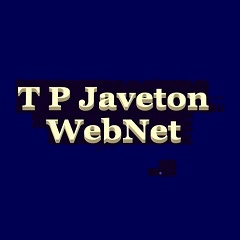The resume tone and style
It is often said, and sometimes repeated over and over again, that a well-written resume is a winning resume; and some might ask, what does that mean? And how can it be determined whether or not a resume is written in a tone and style that employers will respond to? Synthesizing educational achievements, years of professional experience, the numerous qualifications acquired since entering the job market and other inherent employable skills is not easy to document, I’m sure you will agree, if you have been in the position of having to do such synthesizing.
Every phrase or statement you write has to convince your potential employer that you are the candidate best suited for the job s/he is offering; and to do so, you would have had to use appropriate action and/or power words. Such action and power words are described as keywords (verbs) that add strength and positive implication to your job experience, performance, responsibilities and qualifications.
That having been said, however, if you are not familiar with such words, phrases and keywords, it is important to make a note of the following: When you submit your resume to a potential employer, there are two scenarios that will occur. First, your application will be ran through a computer software program that searches your resume for key terms as indicated by that employer; and if your resume contains those key words, it will be pulled aside for further review, as it could be deemed a well-written resume per that employer’s criteria.
Effect of action words on the resume
Second, a hiring manager – or sometimes a human resources associate – will receive a stack or resumes and scan through them quickly to pick out those that stand out most acceptably, based again on certain key words. It seems clear, based on such computer scans and separation of certain resumes containing specific keywords, that these action words in the resume are critical to your success in obtaining a particular job.
In view of the above you should be cognizant of the manner in which your employment history is listed on any resume document you’re sending to potential employers. In other words, your resume should list each job’s responsibilities in bullet point form with each statement starting with an action word.
Under this scenario, the use of power verbs and/or phrases will indicate to your employer that you are the type of individual (job candidate) who is driven by action and results; and that you can effectively articulate your professional experience, thus showcasing your communication skills. Such articulation of power verbs and phrases could look similar to this small sample of action words which might be helpful when formulating your own list:
Action words to personalize your resume
- created
- developed and implemented
- managed
- delivered
- designed
- facilitated
- negotiated
- coordinated
- budgeted
- acted
- communicated
- consulted, etc.
This is a very short sampling of action words, but there are many resources on the Internet containing extensive listings of action words and phrases which can be obtained with a little research; but be careful to use only those terms that are relevant to your field of experience. Your best bet would be to locate resume samples provided by professionals in your industry.
Review these resumes for ideas on how to list your responsibilities, but be mindful that you do not copy exact statements from another person’s resume; and while you can do your own research, you will want to make sure that your resume is personalized to your own professional experience.
Evaluate and review your resume action words
Also avoid falling into the trap of using the same action word(s) over and over; and if you have, in fact, managed multiple projects you may want to be a bit more specific about your role in each. For example, maybe you were the communication liaison in one project, while you were the project manager for another. If this is the case, simply begin the first bullet point with “communicated,” and the second bullet point with “managed.”
However, be aware of the words you are using and consider their value in your resume; but do not get carried away with the use of varying terms, especially those that may change your role or your responsibilities. Additionally, you can find key action words in job descriptions. Review your resume against a job description and make sure that all required qualifications are addressed in your statements.
The review will also help you identify action words that the employer uses, which you can in turn use to customize your resume or cover letter to that specific job. Always make sure that you are consistent in the way you list all your responsibilities and qualifications, and make sure that your statements exude positive attitude and focus on actions and results. By doing so, you are guaranteed to create a winning resume that will get you noticed.


